Table of contents
Turmeric (Curcuma longa) is known for its bright yellow color in cooking and can be used to dye certain materials such as paper. Turmeric can spice up a range of dishes and is also a natural remedy.
Culinary uses:
Turmeric can be used fresh or dried and ground. What does turmeric taste like? Turmeric root has a peppery, slightly spicy taste. Dried turmeric tastes milder and slightly bitter. Turmeric has a similar yellow color to saffron but a completely different flavor.
Ground turmeric is a popular spice in rice, curry, lentil dishes, and stews. Turmeric is an essential ingredient in yellow curry powder, giving the powder its color.
Turmeric can also be used in sweet dishes, for example, Erb Muesli.
Turmeric is one of the most common spices in Asian and Indian cuisine, giving many traditional dishes their unique flavor. In countries where turmeric is typically grown, the sprouts and inflorescences of the plant are also eaten fresh, for example, in salads or as a side dish.
Recipe for Turmeric Paste:
You can use this delicious vegan paste to spice up a variety of lentil, rice, and pasta dishes. You can also use it in mueslis and smoothies.
Ingredients: 125 g ground turmeric, 500 mL water, 1 teaspoon ground cinnamon, 2 teaspoons ground ginger, 1 tablespoon coconut oil (or cocoa butter), 1 teaspoon fresh or ground cardamom, ground black pepper.
Preparation: Mix water and turmeric well in a saucepan, stirring continuously over low heat for 5–10 minutes until the mixture thickens into a creamy paste. Mix in the oil and the remaining spices and stir well. Cool and then pour into small, sealable glasses. When stored in screw-top jars, turmeric paste can be kept in the refrigerator for 2–3 weeks.
Recipe for Vegan Turmeric Latte:
To make one cup of turmeric latte, you need 1 teaspoon of ground turmeric, honey or agave syrup, and freshly grated ginger. Bring the plant-based milk (oat, almond, or rice milk) to a boil and then remove from the heat and add the spices. Use a whisk to stir in the spices to make sure that everything mixes well. You can also use a milk frother to make it taste even more delicious. Turmeric lattes, also called golden milk, are said to stimulate digestion.
| Not only vegans and vegetarians should read this: A Vegan Diet Can Be Unhealthy. Nutrition Mistakes. |
Purchasing — where to shop?
You can find ground turmeric in all major supermarkets including Walmart, Whole Foods Markets, Kroger, and Safeway (United States); Asda, Sainsbury’s, Tesco, Aldi, Lidl, and Holland & Barret (Great Britain); Metro, Extra Foods, and Goodness Me (Canada); Coles, Woolworths, and Harris Farm (Australia). Turmeric root is uncommon in major supermarkets; however, it can be found in some fresh food stores and in regions where turmeric is grown.
For organic ground turmeric, you should try organic supermarkets, health food stores, or online shops.
Turmeric capsules are also common dietary supplements. If you want to benefit from turmeric’s nutrients, however, we recommend eating 3–5 g of turmeric root or ground turmeric every day instead of taking capsules.
Finding wild:
It is questionable whether turmeric can really be found in the wild. It has been cultivated for a long time, and turmeric found in the wild is more likely to be feral than truly wild. Turmeric can be found in forests in India, Indonesia, and South China, in areas where the plant is cultivated.1
Storing:
Ground turmeric is very sensitive to light, losing its flavor and yellow color when exposed to light. If stored in well-sealed, opaque containers, ground turmeric keeps for about two years.
Nutrients — nutritional information — calories:
Turmeric contains 312 calories per 100 g, most of which come from carbohydrates (67 %). Protein makes up 9.7 %, while fat accounts for 3.2 %.2
Given that we consume spices in small quantities, it is less important to consider the nutrients they contain. Turmeric nonetheless contains remarkable quantities of nutrients such as manganese (20 mg/100 g). This is a significantly higher quantity than wheat germ (13 mg) or hazelnuts (6 mg), which are typically considered to contain high quantities of manganese. Saffron and cloves contain even higher quantities of manganese (28 and 60 mg/100 g respectively). Manganese is an essential trace element that is important for the development of human cartilage and connective tissue.2
At 55 mg/100 g, turmeric also contains high quantities of iron. And at 123 mg/100 g, green herbs such as dried thyme contain considerably higher quantities. Iron is very important for transporting oxygen in the blood and storing it in cells.2
Turmeric also contains considerable amounts of potassium. One hundred grams of turmeric contains 2,080 mg potassium; however, dried herbs such as parsley (2680 mg) and basil (2630 mg) contain even more. At 1870 mg/100 g, chili flakes contain a comparable amount. Potassium is an essential mineral and is important for the water regulation of cells.2
However, a balanced vegan diet should ensure that you are getting enough potassium. Dried turmeric also contains magnesium, zinc, and phosphorus, as well as important amino acids.2
Turmeric root contains up to 5 % essential oils. Curcumin and its derivatives (curcuminoids) are responsible for turmeric’s yellowish color and account for up to 3 % of the root. After curcumin, the most important chemical components of turmeric are demethoxycurcumin and bisdemethoxycurcumin.
Health aspects — effects:
Curcumin is the most researched component found in turmeric, but its health benefits are not entirely clear. This is because it contains pan-assay interference compounds, which may lead to false results in chemical studies.26
Curcumin is said to have anticarcinogenic, antioxidant, and anti-inflammatory properties. It has also been shown to have antibacterial and cholesterol-lowering properties.3 According to Brockhaus, turmeric stimulates the production of gastric juice. It also contains xanthorrhiza (xanthorhiza), which is a pungent, yellow essential oil that has a choleretic effect.3
Breast cancer studies show that the "growing" of metastases is reduced by increased consumption of the protein p53 found in turmeric, which suppresses tumors.4 However, other studies indicate that turmeric actually leads to a reduction of p53, which would suggest that turmeric has potential cancer-promoting effects.5 Bear in mind that these studies were not conducted on humans.
Patients with advanced prostate cancer (including hormone-refractory prostate cancer (HRPC) showed anticancer activity when treated with curcumin from turmeric. The anticarcinogenic effects of turmeric and its possible chemopreventive effects means that it has been recognized as a possible treatment for prostate cancer.6
In familial adenomatous polyposis (FAP), an autosomal dominant inherited condition, curcumin reduced the number of polyps by 60 % and halved their size.7
The positive effects of turmeric against cystic fibrosis could only be demonstrated in laboratory experiments on mice.8
Curcumin also influences bone metabolism. In mice, it counteracts a loss of bone density caused by estrogen deficiency. However, the role of curcumin in promoting bone health in humans is still unclear.9,10 Curcumin has furthermore been shown to have an anti-inflammatory effect on knee osteoarthritis, where it inhibits the enzymes cyclooxygenase-2, lipoxygenase, and nitric oxide synthase.11 This reduced inflammation is thought to be part of the anticarcinogenic effects.
Curcumin has anticoagulant properties. Turmeric is therefore believed to prevent platelets and blood clots from clumping together. This makes it a natural blood thinner. Regular consumption of turmeric can be very useful for people with arteriosclerosis.12
Is turmeric good for your liver? Turmeric is considered a free radical scavenger and is listed in many studies as an effective remedy against oxidative stress. Oxidative stress may promote liver diseases; however, there are no clear scientific studies to demonstrate this.13 However, people with liver disease should avoid consuming too much curcumin — for more on this see the section below “Dangers — intolerances — side effects.”
Given that we tend to consume very small quantities of turmeric and the bioavailability of curcumin is very low, it is difficult to transfer in-vitro studies to humans.14,15 If you want to increase the bioavailability of curcumin, studies suggest that you should combine curcumin with piperine, a component of pepper.16,17 There are also studies that show an improvement in the bioavailability of curcumin when in combination with centrosome nanoparticles.18 According to an in vivo study, curcumin attenuates fluoride-induced neurotoxicity.19
Dangers — intolerances — side effects:
What are the side effects of turmeric? Regular consumption of turmeric may cause diarrhea, stomach upset, and mild abdominal cramps in people with sensitive gastrointestinal tract mucosa.
You should avoid excessive doses of turmeric or supplements containing turmeric if you have severe liver disease, liver inflammation, an inflamed gallbladder, or gallstones.
Turmeric can inhibit blood clotting, and people with hemophilia should therefore check with their doctor before taking it. It may also interact with certain antithrombotics or acetylsalicylic acid.
Pregnant women, nursing mothers, and children under 12 should not consume turmeric regularly or in high doses, as there are hardly any results from studies indicating the effects of turmeric for these groups of people. In moderate amounts, however, turmeric is harmless (3–5 g). A daily dose of 8–12 g turmeric can cause irritation of the stomach lining even in healthy people.
The Medical Center – University of Freiburg in Germany has published a very informative and comprehensive paper on turmeric by Prof. Dr. Sigrun Chrubasik-Hausmann, which demonstrates that turmeric is relatively harmless. The clinical studies named above that test the effects of up to 8 g of turmeric per day are well above the recommended daily dose recommended by the World Health Organization (0–1 mg/kg body weight (WHO 2000) or EFSA (0–3 mg/kg body weight).27
Traditional medicine — naturopathy:
What is turmeric good for? In addition to the scientific studies, there also some areas of traditional medicine where turmeric is used. In Asia, turmeric is considered a medicinal plant. And in traditional medicine, its healing effects are also praised: turmeric is said to have a supportive effect on liver disorders, rheumatism, diabetic wounds, breathing difficulties, rhinitis, and coughing, but also on anorexia and stomach aches. In Indonesia, turmeric strengthens the immune system as a preventive measure.
Does turmeric deserve to be labeled a “superfood”? Turmeric certainly has many health-promoting properties. When consumed regularly, it can stimulate digestion and reduce flatulence. It furthermore has a positive influence on the digestion of fat.17
Turmeric has been listed as a herbal drug in the German Pharmacopoeia (DAB) as Rhizoma Curcumae Longae since 1930. This includes the Javanese turmeric (Curcuma xanthorrhiza Roxb.).
Description — origin:
Turmeric root comes from South Asia, where it can still be found growing wild today, especially in Indonesia and Sri Lanka. It is mainly cultivated in the tropical parts of South and East Asia, in the West Indies,20 and Africa.
Potted plant cultivation — harvest:
If you like fresh turmeric root, you can grow it yourself. Turmeric (Curcuma longa) is triploid, meaning that you can grow it through vegetative propagation.21 For this purpose, purchase a piece of organic turmeric root. Leave the root in the open air and it to sprout. The best way to do this is to soak the root in water at room temperature for 8 to 12 hours.
After the shoot is a few centimeters, you can transfer it to a larger pot filled with planting soil. The shoot should be vertical and be visible above the soil. It is best to keep it at room temperature in a partly shady place. The soil should be damp, but not soggy — don’t overwater the plant. After two to three weeks, the shoot should begin to grow. Turmeric plants have long leaves and petioles (leaf stems). The flowers are white, pink, or violet and are used as cut flowers since they keep for a long time. In the summer, you can put turmeric plants outside as long as the temperature doesn’t fall below 15 degrees Celsius, even at night. In winter, turmeric must be moved indoors or into a heated sunroom.22 Turmeric plants can reach heights of up to one meter.1
After about nine months, the plant should have formed new roots (rhizomes). You can then harvest the roots in winter, or let them propagate. Once the flowers and leaves of the plant have withered, the root can be dug out. The root can be dried by being exposed to heat and then processed into a powder. This can be done using an electric coffee grinder.
Danger of confusion:
Turmeric root is most likely to be confused with ginger (Zingiber officinale) as they have a similar appearance. However, once you cut the turmeric root, it should be obvious from its intense yellow or reddish color that it is not ginger.
General information:
Turmeric (Curcuma longa or C. domestica) belongs to the ginger family (Zingiberaceae). It has been used as a spice and remedy in India for several thousand years.
Alternative names:
Turmeric is also known as curcurmin, curcuma, curcuma aromatic, Indian saffron, turmeric rhizome, turmeric root, curcuma longa, and wild curcuma.24
Other uses:
Turmeric is most commonly processed into powder and used as a base ingredient for curry spice mixes. It can also be used as a coloring agent for a wide range of purposes, from food to paper, varnish, and ointments. In the chemical industry, turmeric paper has been used to identify alkalis (turning a reddish-brown at pH = 8.6). Turmeric is used as a reagent to detect the element boron, for example, in water and soil specimens.25
As ground turmeric is relatively inexpensive, counterfeiters often use it to stretch saffron powder — you can use lye (sodium hydroxide) to check if this is the case. If you add an alkaline caustic solution to saffron, an extract of saffron threads will turn red if stretched by turmeric; without turmeric, it retains its yellowish color.
Literature — sources:
Bibliography - 26 Sources
| 1. | Pahlow M. Das grosse Buch der Heilpflanzen. Gesund durch die Heilkräfte der Natur. Nikol: Hamburg. 2013. |
| 2. | USDA United States Department of Agriculture. |
| 3. | Herfurth F, Lenze B. Ganzheitliche Ernährungsberatung: Ein Nachschlagewerk. BoD: Norderstedt. 2014. |
| 4. | Aggarwal BB, Shishodia S et al. Curcumin suppresses the "p........"l-induced nuclear factory-kB pathway in breast cancer cells and inhibits lung metastasis of human breast cancer in nude mice. Clinical Cancer Research. 2005;11(20). |
| 5. | Tsvetkov P, Asher G et al. Inhibition of NAD(P)H: quinone oxidoreductase 1 activity and induction of p53 degradation by the natural phenolic compound curcumin. Proc. Natl. Acad. Sci. USA, 2005, 102(15). |
| 6. | Cheng WL, Huang CY et al. Maspin enhances the anticancer activity of Curcumin in hormone-refractory prostate cancer cells. Anticancer Res. 2018 Feb;38(2):863-870. |
| 7. | Cruz-Correa M, Shoskes DA et al. Combination treatment with curcumin and quercetin of adenomas in familial adenomatous polyposis. Clin Gastroenterol Hepatol. 2006 Aug;4(8). |
| 8. | Egan ME, Pearson M et al. Curcumin, a major constituent of turmeric, corrects cystic fibrosis defects. Science. 2004;304(5670). |
| 9. | Oh S, Kyung T, Choi H. Curcumin inhibits osteoclastogenesis by decreasing receptor activator of nuclear factor-kappaB ligand (RANKL) in bone marrow stromal cells. Mol. Cells. 2008, 26(5). |
| 10. | Kim W, Ke K et al. Curcumin protects against ovariectomy-induced bone loss and decreases osteoclastogenesis. J. Cell. Biochem. 2011. |
| 11. | Madu K, Chanda K, Saji M. Safety and efficacy of Curcuma longa extract in the treatment of painful knee osteoarthritis: a randomized placebo-controlled trial. Inflammopharmacology. 2012, Dez. |
| 12. | Kim DC, Ku SK, Bae JS. Anticoagulant activities of curcumin and its derivate. BMB Rep. 2012;45(4). |
| 13. | Farzaei MH, Zobeiri M et al. Curcumin in Liver Diseases: A Systematic Review of the Cellular Mechanisms of Oxidative Stress and Clinical Perspective. Nutrients. 2018;10(7). |
| 14. | Nelson K, Dahlin J et al.The Essential Medicinal Chemistry of Curcumin. Journal of Medicinal Chemistry. 2017;60(5). |
| 15. | Baker M. Deceptive curcumin offers a cautionary tale for chemists. Spice extract dupes assays and leads some drug hunters astray. Nature. 2017;541(7636). |
| 16. | Shoba G, Joy D et al. Influence of Piperine on the Pharmacokinetics of Curcumin in Animals and Human Volunteers. Planta Med. 1998;64(4). |
| 17. | Prasad S, Tyagi AK, Aggarwal BB. Recent Developments in Delivery, Bioavailability, Absorption, and Metabolism of Curcumin: the Golden Pigment from Golden Spice. Cancer Research and Treatment: Official Journal of Korean Cancer Association. 2014;46(1). |
| 18. | Babaei E, Sadeghizadeh M et al. Dendrosomal curcumin significantly suppresses cancer cell proliferation in vitro and in vivo. Int Immunopharmacol. 2012 Jan;12(1):226-34. |
| 19. | Sharma C, Suhalka P et al. Curcumin attenuates neurotoxicity induced by fluoride: An in vivo evidence. Pharmacognosy Magazine. 2014;10(37). |
| 20. | Rehm S, Espig G. Die Kulturpflanzen der Tropen und Subtropen. Anbau, wirtschaftliche Bedeutung, Verwertung. Eugen Ulmer: Stuttgart. 1976. |
| 21. | Brücher H. Tropische Nutzpflanzen. Ursprung, Evolution und Domestikation. Springer: Berlin, Heidelberg, New York. 1977. |
| 22. | Plantura.garden Kurkuma Profi Tipps zum Anbau der Gelbwurz. |
| 24. | Bown D. Encyclopedia of Herbs & their uses. DK: London. 1996. |
| 25. | Wikipedia Kurkuma |
| 26. | Baell J., Walters M. A. Chemical con artists foil drug discovery. Nature 513, 25 September 2014:481-483. |
| 27. | https://www.uniklinik-freiburg.de /fileadmin/mediapool /08_institute /rechtsmedizin /pdf/Addenda/2016 /Kurkuma_-_Wissenschaftliche _Zusammenfassung_2015.pdf |

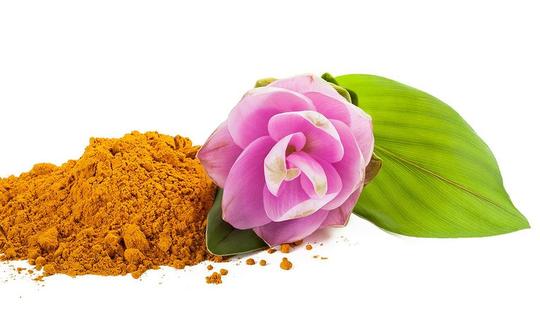

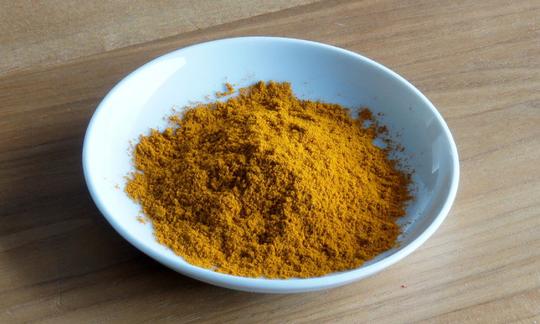

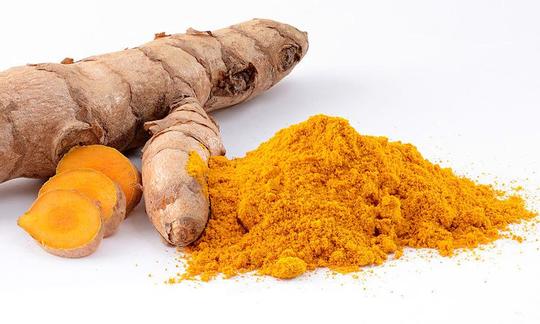

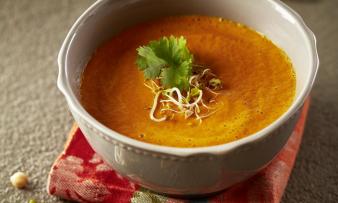
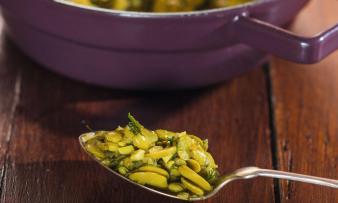
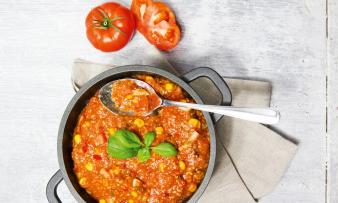





Comments